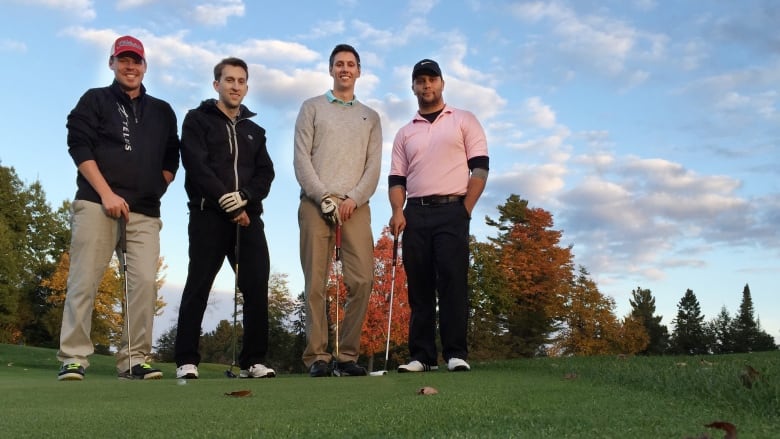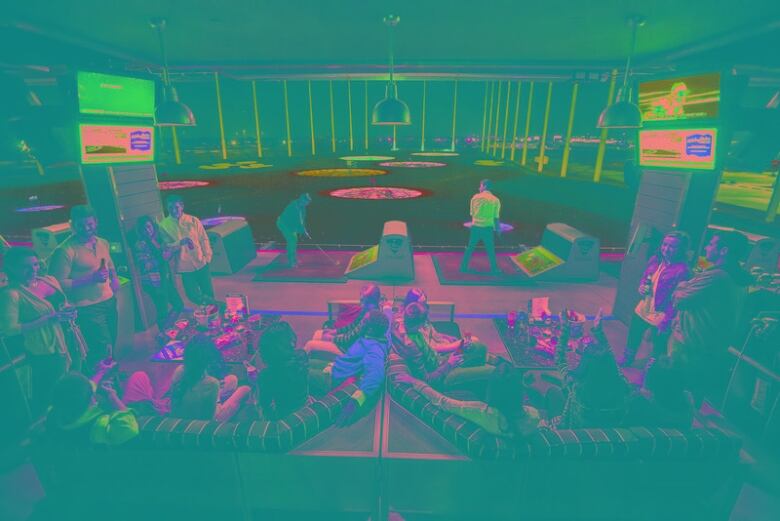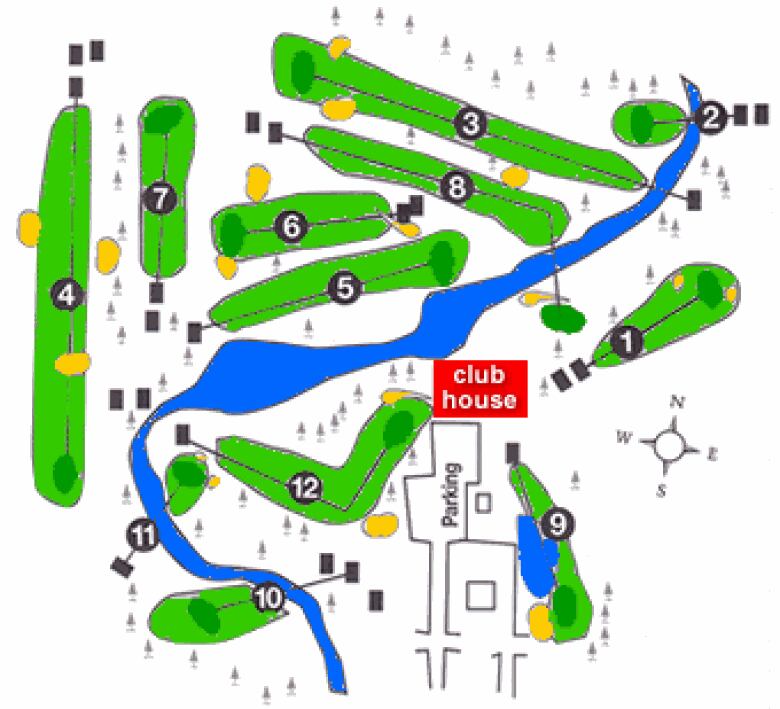Golf reaching out to younger generation but is it trying too hard?
Bikinis, beats and beers: Stodgy sport tries to reinvent itself in face of changing consumer demand

Will Gordon gets out on the greens every chance he gets. The 29-year-old says he plays with the same three guys nearly every single time, because he doesn't have many other options people his age justaren't golfing.
"There is not an opportunity for me to jump in with different foursomes just cause there is not enough people playing," he says.
The golf industry knows it, which is whyover the past couple of years it has thrown out a number of bold ideas to grab the attention of the coveted 18-to-24-year-old demographic.They're doing it by adding things likemusic, speeding up and shortening the game, relaxing dress codes and making the golf experience more like a party.
- Golf Town to be bought by Fairfax and CI Investments
- Golf course numbers show declining popularity
- Golf's private clubs drive to survive
"If you are under 35, golf has very little appeal to you at all," says Marvin Ryder, a marketing professor at the DeGroote School of Business atMcMaster University.

"It's not terribly athletic. It takes an awful long time to play. You don't use your cellphone. Sometime golf courses don't even have good cellphone reception."
According to the U.S. National Golf Federation, the number of millennials playing dropped 13 per cent between 2009 and 2013. Changing demographics, less recreational time and the high cost of the game are blamed for the decline.
What about just 6 holes?
Keith Pelley, the Canadian-born chief executive of the PGA European tour, has seen the writing on the wall, and has made appealing to a new generation a big priority.
In an interview with the BBC this summer, he said the tour is looking to include a six-hole format with a shot clock and music at some events.
"If you are not prepared to change, you are not prepared to be innovative," Pelley said. "Ifyou are not prepared to take chances, then I do believe that the sport will fall behind."
Last week, the tour unveiled the new World Super 6 Perth tournament in Australia next year. It's an attempt to shake up the classic format by adding tension to the final day of play.
After playing the customary 54 holes on the first three days,on Sundaygolfers will compete in a six-hole match play tournament instead of the traditional 18 holes, with the possibility of shoot-out at the end to decide the winner.
In that knockout round "the victor [will be]decided on a nearest-the-pin contest where only the first shot counts," the tour explainsin a press release.

The tours themselves are trying new things to get millennials to watch the pros. But other parts of the industry aretrying even more extreme tactics to get a new generation of duffers to come out and actually hit the links.
Bikinis, beer and bumping music arenot what you normally associate with golf but they're a growing trend among some golf loversin the U.S and U.K.

An American company, TopGolf, has turned the usually dull driving range into a night-out experience, adding booze, TVs and couches. Founded in England in 2000, TopGolf now has29 locations in the U.K. and U.S, with 11 more on the way. More than half of the clientele are millennials.
The concept could be headed to Canada soon. "We have received a lot of requests for a location in Canada throughout the years," company spokeswoman Adrienne Chance says. "It's something we are considering."
Keep it simple
Other golf coursesare managing towinover new fans with less drastic changes.
"It's more affordable, it doesn't take all day to play," says Jim Holmes, general manager of the 12-holeDerrydale golf course in Mississauga, Ont., just west of Toronto.
He says you don't need all the bells and whistles to attract golfers his shorter-format course has been attracting younger golfers for years without sacrificing the decorum of the sport.
"Every golfer comes in and says, 'You know what? After I played 13 holes, I was tired, I was done, I want to go home,'" Holmes says, "They say nine holes wasn't enough, 18 holes is too much."

Resistance may be futile
Others don't want to see any changes to the classic18-hole round.
"I think it's terrible, I think it's gimmicky," the millennial golferGordon says, adding that it's all too much for him.
"I don't need a golf board. I don't need a 15-inch hole. I don't need to have foot golf. I don't need to have dogs on the course. It's garbage."
For Gordon, the solution to golf's problems is simple:Get online in a more real way. "I don't think golf has adapted technology at a pace consistent with other sports," he says.
He suggests that the golf industry isn't taking full advantage of the potential present in social media.
"I can go and play nine holes and share that experience through Twitter, Facebook, Snapchat with my peers. Just like they are with me on the course. I mean I could FacebookLive it it I wanted to.
"Because of that," he says,"I don't need a [golf] club to feel like I belong."












_(720p).jpg)


 OFFICIAL HD MUSIC VIDEO.jpg)
.jpg)



























































































